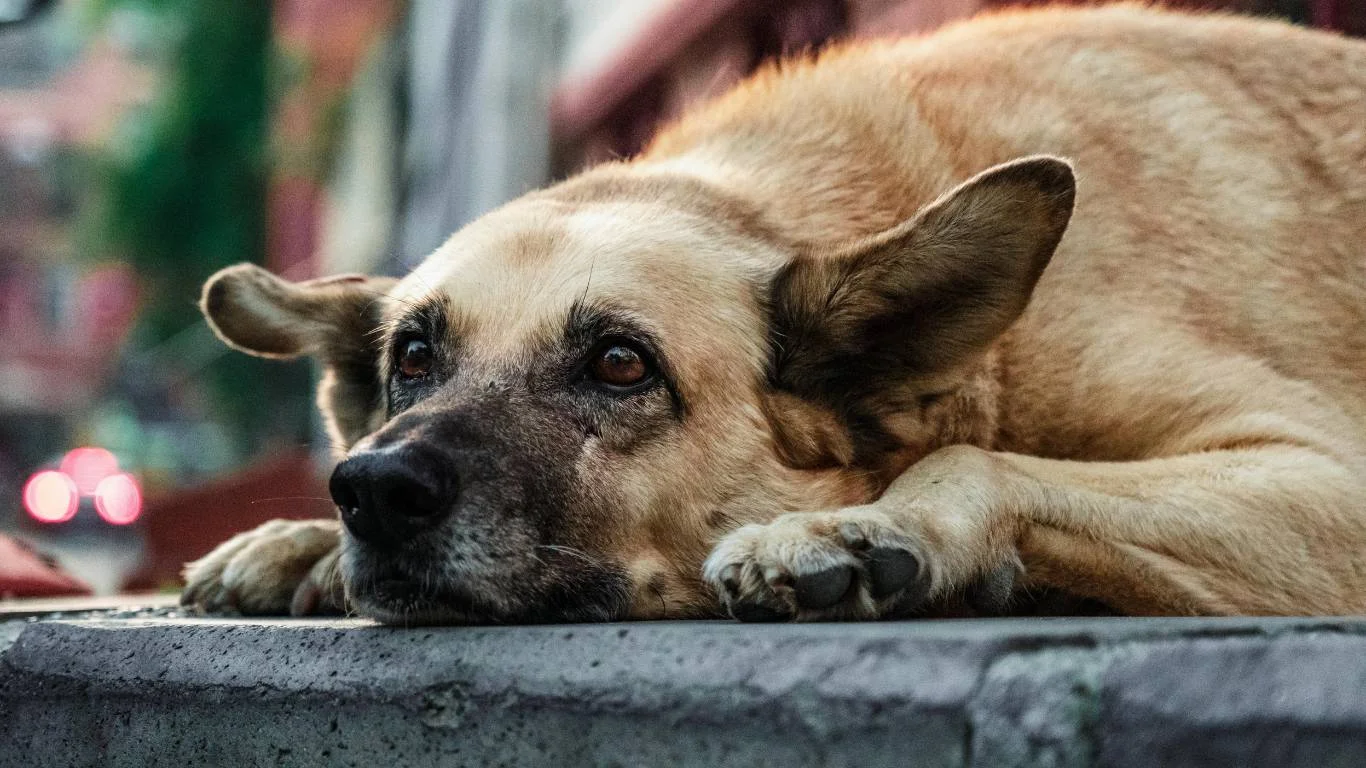Caring for a Dog with a Collapsed Trachea: What Really Helps
If you’ve found yourself Googling how to care for a dog with a collapsed trachea, you’re probably already worried and knee-deep in vet visits, medications, and midnight coughing fits. Trust me, I’ve been there more times than I can count as a veterinary assistant who has seen this condition up close—especially in those tiny pups like Yorkies and Pomeranians who love to bark like they own the block. So let’s take a deep breath (something your pup might be struggling with right now) and break this down together in a way that’s actually helpful, not just a jumble of medical terms.
Understanding What a Collapsed Trachea Really Is

First things first: the trachea, or windpipe, is a flexible tube made up of cartilage rings. In dogs with a collapsed trachea, those rings weaken and flatten, making it hard for air to pass through normally. Think of it like a straw that’s been pinched—air still moves, but it takes more effort and makes that classic goose-honk cough you might’ve already heard.
Small breeds are more at risk, especially seniors. I’ve had so many little dogs come into the clinic with what owners thought was just a “weird cough” that turned out to be a collapsing trachea. Early signs often go unnoticed because they can look like allergies or just excitement. But the longer it goes unmanaged, the worse it gets. That’s why knowing how to care for this condition early is everything.
Common Signs and Symptoms to Watch For

What Does It Sound and Look Like?
That cough is unmistakable once you’ve heard it a few times. But collapsed trachea symptoms can include more than just coughing:
- Dry, honking cough (especially after excitement, eating, or pulling on a leash)
- Wheezing or noisy breathing
- Gagging or retching (sometimes mistaken for reverse sneezing)
- Exercise intolerance — your dog may suddenly seem tired after short walks
- Blue gums or tongue in extreme cases (that’s a vet emergency!)
From my personal experience, dogs will try to “push through” the discomfort. I had a sweet little Maltese named Bella in the clinic who would still try to zoom around the room between coughing fits. Owners sometimes think the dog is fine because of their energy, but energy doesn’t mean the trachea isn’t struggling.
How to Care for a Dog with a Collapsed Trachea at Home

Switch to a Harness — Seriously, Do It Today
This is the easiest win in the book. If your dog is still wearing a collar, swap it out for a harness like, yesterday. Collars put direct pressure on the trachea, especially when your dog pulls (and they *always* pull at the worst times, right?).
Keep Your Home Calm and Cool
Heat, stress, and excitement all trigger coughing episodes. You wouldn’t believe how many flare-ups I’ve seen just from visitors coming over or fireworks outside. Try these tips:
- Keep your dog in a quiet, cool room when possible.
- Use a fan or air purifier — better airflow helps breathing.
- Limit barking triggers (yep, that might mean covering the window).
I once suggested white noise machines to a client whose Schnauzer would bark at every squirrel. She thought it was silly—until it worked. Don’t knock it ‘til you try it!
Nutrition & Weight Management
Okay, this one hits close to home. A dog with even a little extra weight is gonna have a much harder time breathing. I worked with one adorable Shih Tzu, Max, who dropped just 2 pounds and his coughing went down by half. His owner couldn’t believe it. Less weight = less pressure on the airway.
Here’s what I recommend (and often help pet parents with):
- Switch to a lower-calorie, high-fiber diet (your vet can guide you)
- Feed smaller, more frequent meals to avoid bloating and pressure
- Avoid treats that are hard or require a lot of chewing
I know treats are love, but trust me—there are plenty of low-calorie, soft treat options out there that won’t mess with your pup’s breathing.
Medication and Veterinary Care: When Home Management Isn’t Enough

Alright, let’s get real—sometimes, the cough just doesn’t quit no matter how many tricks you try at home. That’s when it’s time to bring in your vet and talk about medication options. And no shame in that game! I’ve seen plenty of tough little pups who needed that extra support to get their breathing under control.
Your vet might recommend:
- Cough suppressants: These help reduce the frequency and severity of that honking sound. Huge relief for both you and your pup.
- Bronchodilators: They relax the muscles in the airway, making it easier to breathe. It’s like giving your dog a wider tunnel to breathe through.
- Steroids: If inflammation is severe, steroids can reduce swelling. But they’re not a long-term solution due to side effects.
- Antibiotics: Sometimes infections complicate things, especially if mucus starts building up in the airway.
One little Chihuahua I worked with named Tiki had to go on a short course of steroids. Her mom was hesitant, but with close vet supervision and some nutritional tweaks, she did great. The key? Constant communication with your vet. Ask questions. Share videos of coughing episodes. You’re your dog’s advocate, and your vet should be your partner.
Creating a Low-Stress Lifestyle for Your Dog

Stress Can Be a Trigger
This part is often overlooked, but seriously, stress is a sneaky trigger for collapsed trachea flare-ups. You’d be surprised how many dogs start coughing more during thunderstorms, road trips, or when guests stay over.
Here are a few calming strategies I swear by:
- Set up a calm corner: A comfy bed, low lighting, and maybe a white noise machine can help create a safe zone.
- Try calming aids: Pheromone diffusers, calming treats, or even dog-safe herbal remedies (with your vet’s OK).
- Stick to a routine: Dogs thrive on predictability. Regular feeding, walk, and sleep times can lower anxiety.
I had a senior Yorkie patient, Teddy, who got especially anxious around loud noises. His owner added lavender essential oil to a diffuser (again, make sure it’s safe and diluted!) and played soft classical music during fireworks season. The difference? Night and day.
Exercise and Activity Tips (Yes, Your Dog Still Needs Some!)

One of the trickiest things about how to care for a dog with a collapsed trachea is finding that balance between rest and movement. Exercise is still super important—it helps with weight control, reduces anxiety, and keeps muscles strong. But you’ve got to be strategic about it.
How to Exercise Safely
- Opt for short, slow walks: No more hikes or high-energy park visits. A slow 5–10 minute stroll around the block is golden.
- Avoid the heat: Hot weather thickens the air and makes breathing harder. Walk early in the morning or after sunset.
- Watch for warning signs: If your dog starts coughing, slowing down, or seems distressed—cut it short and head home.
And always use a harness—yep, still harping on that. I once saw a Pekingese recover faster just by making that one change. It matters.
Playtime Ideas at Home
If outdoor walks are too much, bring the fun inside:
- Use puzzle toys that stimulate the mind without requiring too much movement.
- Teach low-energy tricks like “touch” or “find it” using soft treats.
- Set up a little scent game with kibble hidden in snuffle mats or around the room.
The goal is to keep them engaged and moving just enough—not to wear them out. Gentle stimulation can be just as rewarding as a long run for dogs with breathing issues.
Supplements & Natural Supports
Now, I’ll be honest—supplements aren’t magic pills, but they can absolutely help support the trachea and respiratory health when used alongside medical treatment and a good diet.
Some of my go-tos (always vet-approved first!):
- Glucosamine & Chondroitin: Often used for joints, but they also support cartilage health in the trachea.
- Omega-3 Fatty Acids: Anti-inflammatory and great for overall wellness.
- Honey (in tiny amounts): For soothing the throat—just a dab on a spoon or mixed into a little food. Local honey is best!
One Dachshund named Lily came in monthly for her checkups, and her owner swore by a combo of glucosamine and omega oils. She was on the lower end of symptoms but stayed stable for years with the right support system. It’s about finding what works for *your* dog’s body and lifestyle.
Knowing When It’s Time for Surgical Options

Okay, so what happens when you’ve done everything—diet, meds, lifestyle changes—and your dog is still really struggling? This is where the idea of surgery might come into play. It’s not super common, and it’s definitely not the first line of treatment, but in some severe cases, it can improve quality of life dramatically.
There are a couple of surgical routes:
- Tracheal stents: A metal or plastic tube is inserted inside the airway to help hold it open.
- External tracheal rings: Tiny rings are placed around the trachea to reinforce it from the outside (usually done at specialist centers).
I’ve only seen a few of these in my years as a vet assistant, but one that stands out is a feisty Pomeranian named Luna. Her case was severe—she couldn’t walk across the room without coughing. After a stent procedure and some recovery time, she came back wagging her tail, breathing easier, and back to bossing around her housemates.
Surgery comes with risks, of course, and it’s usually a last resort. But when done by an experienced board-certified surgeon and followed with good home care, it can be life-changing. Always weigh the pros and cons with your vet, and ask lots of questions.
Creating a Long-Term Care Plan

Routine Monitoring Is Key
One thing I always stress to pet parents: consistency is everything. When you’re managing a chronic condition like a collapsed trachea, there’s no magic fix. But with the right plan, you can help your dog live a happy, comfortable life for years.
Here’s what a basic long-term care plan might look like:
- Regular vet visits: Every 6–12 months for check-ins, or more if meds are involved.
- Track symptoms: Keep a simple journal of coughing frequency, triggers, or new symptoms.
- Adjust diet and exercise: As your dog ages, needs will change. Stay flexible!
- Stay stocked on meds and supplements: Don’t wait until you run out to refill prescriptions.
One of my favorite clients kept a little spiral notebook where she jotted down when her Shih Tzu, Nala, had good or bad days. That kind of record made vet appointments 10x more helpful—we could clearly see patterns and adjust her plan accordingly.
Educate Everyone in the Household
It’s not just about *you* knowing what to do. If you live with others—family, roommates, pet sitters—make sure they’re all in the loop. Leave a note on the fridge or create a “care card” with key reminders:
- Always use the harness for walks
- Don’t give hard or crunchy treats
- Keep calm during coughing spells—don’t panic!
Your dog can’t advocate for themselves, but you can build a little care team that helps them thrive.
Resources and Further Reading
Want to dig a little deeper? These professional organizations are great sources of trusted, science-backed information about airway disorders, small breed care, and chronic disease management in pets:
- American Veterinary Medical Association (AVMA)
- American College of Veterinary Surgeons (ACVS)
- Cornell University College of Veterinary Medicine
These are the kinds of sites I trust when I’m brushing up on updated treatment guidelines or checking research. Google can be a mess—so stick with the sources your vet trusts too.
Disclaimer
This article is intended for informational purposes only and is not a substitute for professional veterinary advice, diagnosis, or treatment. Always consult with a licensed veterinarian regarding any medical concerns or treatment options for your pet.






